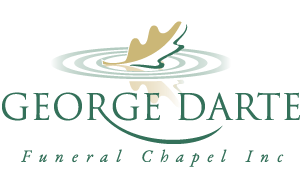Cremation Services
Cremation is an increasingly popular option for many people, serving as an alternative to burial. Reasons for preferring cremation vary. Some religions request it, while other people consider it more environmentally conscious. Some may simply like the idea of cremation more. During cremation, the remains are placed in a special furnace and reduced to resemble coarse sand. Cremation is not an alternative to a funeral, but rather an alternative to burials or other forms of disposition.
Cremated bodies can be scattered, buried, or they may be kept with the family in a decorative urn. There are many ways to dispose of cremated bodies today: cremated bodies can be placed in an artificial coral reef in the ocean; they can be launched into space or sent up in helium balloons; they can be spun into glass pieces of art or diamonds.
Some religions welcome cremation, while others forbid it. The Catholic Church had previously banned cremation up until 1963, and burial remains the preferred form of disposition today. In other Christian denominations, cremation was historically discouraged but is now more widely accepted. In eastern religions such as Hinduism, Jainism, Sikhism, and Buddhism, cremation is mandated. In Islam, it is strictly forbidden. Orthodox Jews also forbid cremation, while other sects of Judaism support cremation; however, burial remains the preferred option.
Cremation FAQ
What is Cremation?
Cremation is the process of reducing the human body using high heat and flame. Cremation is not the final disposition of the remains, nor is it a type of funeral service. The cremation chamber burns at 982 degrees Celsius or 1800 degrees Fahrenheit.
Is a casket needed for Cremation?
No, a casket is not required. Most crematoriums require either a casket or alternative container constructed of wood or heavy duty rigid cardboard. The crematorium staff will not handle a deceased human body as it must be in a casket or alternative container.
Is embalming required prior to cremation?
No. It is against the law for a funeral home to tell you otherwise.
Can the body be viewed without embalming?
Yes, most funeral homes allow immediate family members to view the deceased prior to cremation.
Can the family witness the cremation?
Yes they can; some cremation providers will allow family members to be present when the body is placed in the cremation chamber. Some religious groups even include this as part of their funeral custom. In some cultures the eldest son must push the button to start the cremation process.
Can a Cremation Urn be brought into church?
Nearly all churches allow for the urn to be present during the memorial service. Most Catholic Churches also allow the remains to be present during the Memorial Mass. Including a cremated body as part of the funeral provides a focal point for the ceremony. George likes to say to not have the body or cremated body present is like going to a wedding without the bride or groom.
What can be done with the cremated body?
While laws vary in various jurisdictions, for the most part, a cremated body can be buried in a cemetery lot or in a cremation garden, interred in a columbarium, kept at home, or scattered. Again, George likes to point out that when you scatter a person's cremated body there is no place for a family member (even generations down the road) to go to be present physically, spiritually or emotionally. Also, cemeteries are a huge resource for those seeking genealogical or family tree information.
How can I be sure I receive the correct remains?
All reputable cremation providers have developed rigorous sets of operating policies and procedures in order to maximize the level of service and minimize the potential for human error. Since it is illegal to perform more than one cremation at a time, and the vast majority of crematories can only cremate one body at a time, it is next to impossible to receive the incorrect remains. We have a metal tag that is not destroyed by the heat of the fire that has an identifying number to ensure that the correct person has been cremated.
How long does the actual cremation take?
It all depends on the weight of the individual. For an average sized adult, cremation can take two to three hours at a normal operating temperature of 982 degrees Celsius 1800 degrees Fahrenheit.
What does the cremated body look like?
Cremated body resembles coarse sand and are whitish to light grey in colour. The cremated body of an average sized adult usually weigh approximately 3.4 kgs or 7.5 lbs.
Do I need a Cremation Urn?
An urn is not required by law. An urn may be desired if there is to be a memorial ceremony or if the cremated body is to be interred in a cemetery. If an urn is not purchased or provided by the family, the cremated body will be returned in a cardboard box.
Are there ever big pieces of bone after cremation?
Yes, just about always there will be larger pieces of bone that is not reduced to a small size. The crematorium has a pulverizing machine that grinds down the larger bones into much smaller bone fragments.
Click Here
Cremation with Services Pricing
Click Here
Click Here

